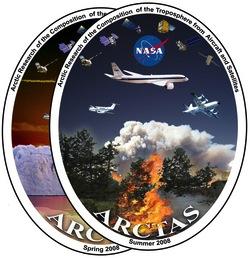The Arctic is a beacon of global change. It is where warming has been strongest over the past century, accelerating over the past decades. It is an atmospheric receptor of pollution from the northern mid-latitudes continents, as manifested in particular by thick aerosol layers ("arctic haze") and by accumulation of persistent pollutants such as mercury.
It is increasingly beset by emissions from massive forest fires in boreal Eurasia and North America. Perturbations to the arctic environment trigger unique regional responses including melting of ice sheets and permafrost, decrease in snow albedo due to deposition of black carbon,and halogen radical chemistry from sea salt aerosols deposited to the ice.
These responses make the Arctic a particularly vulnerable place, subject to dramatic amplification of environmental change with possibly global consequences. The urgent need for research to better understand changes in arctic atmospheric composition and climate is discussed by the Arctic Climate Impact Assessment (http://amap.no/acia/ ) and the U. S. Global Change Research Program (http://www.usgcrp.gov). Major research activities to address this need will take place in 2007 - 2008 under the auspices of the Third International Polar Year (IPY; http://www.ipy.org/ ).
ARCTAS is part of a larger interagency and international IPY effort collectively identified as POLARCAT.
ARCTAS includes studies for the California Air Resources Board, (CARB) as part of a scientific collaborative effort. Particulars about this study are located here.

